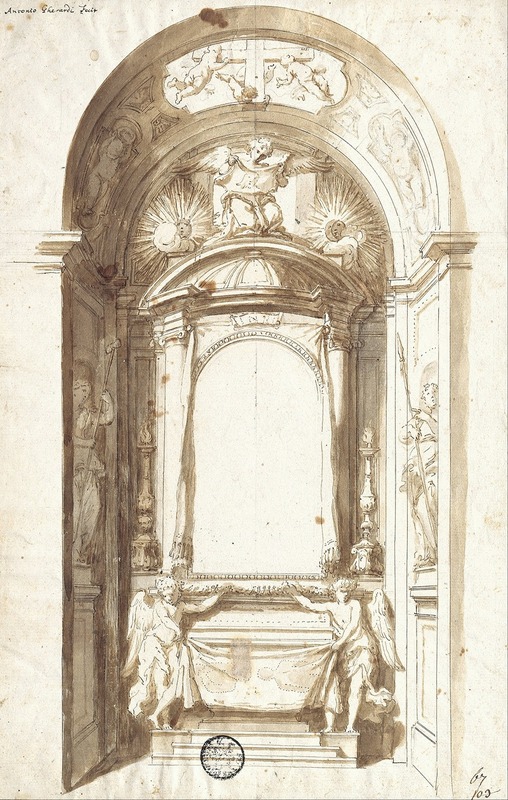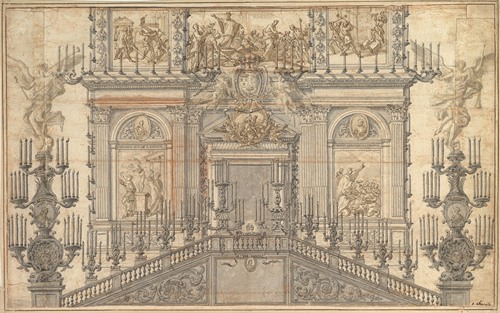
Antonio Gherardi was an Italian painter, architect, and sculptor (stuccoist) of the Baroque style, active mainly in and near Rome and his native city of Rieti.
His original name was Antonio Tatoti, but when he moved to Rome (c. 1656) from Rieti, he changed his surname. His father died when he was only eight years old, and in 1656, Monsignor Bulgarino Bulgarini, Governor of Rieti, became his patron. Two years later Bulgarini sponsored his travel to Rome, and introduced him to his future mentors, Pier Francesco Mola and Pietro da Cortona. In the large workshops organized by the latter, he developed skills in both painting and stucco decoration. In 1674, he joined the Accademia di San Luca.
Although he did not build much, Gherardi's mature architecture is extraordinarily inventive. Designed in a late Baroque manner, he drew freely on forms and ideas of Bernini, Borromini, and Cortona to make his inventions. The best examples of his work can be seen in the Santa Cecilia Chapel, San Carlo ai Catinari, and the Avila Chapel, Santa Maria in Trastevere, both in Rome.
In 1698 he was appointed architect and painter of the chapel of Santa Teresa in Santa Maria in Traspontina, which still preserves a painting of the Ecstasy of Santa Teresa.

